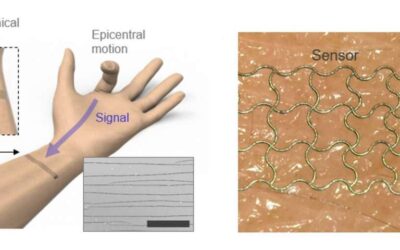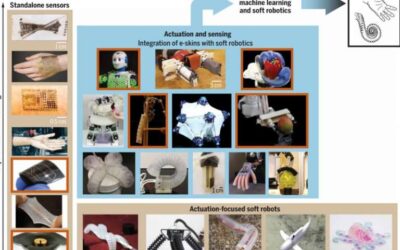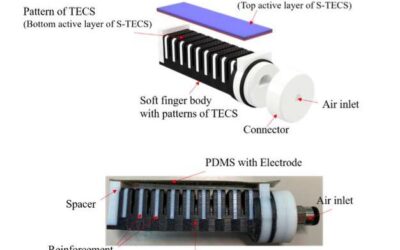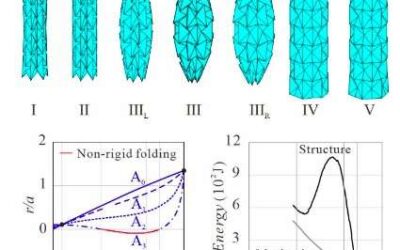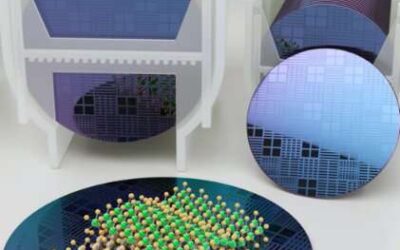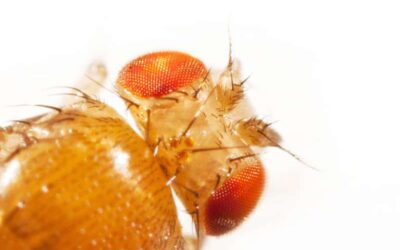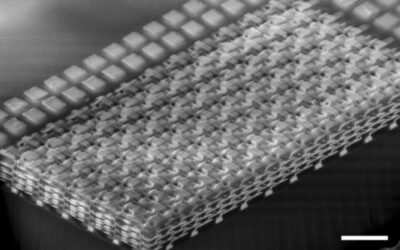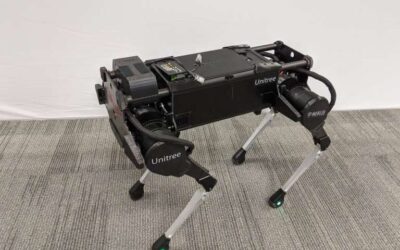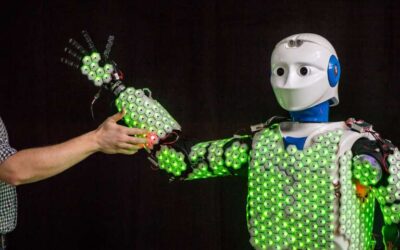Researchers at Seoul National University and Korea Advanced Institute of Science and Technology (KAIST) have recently developed a sensor that can act as an electronic skin and integrated it with a deep neural network. This deep learning-enhanced e-skin system,...
TECHXPLORE
Reviewing progress in the development of machine learning-enhanced e-skins
Researchers at University of California, Yale University, Stanford University, University of Cambridge and Seoul National University have recently carried out a study reviewing recent efforts in the development of machine-learning-enhanced electronic skins. Their...
A system to produce context-aware captions for news images
Computer systems that can automatically generate image captions have been around for several years. While many of these techniques perform considerably well, the captions they produce are typically generic and somewhat uninteresting, containing simple descriptions...
A soft robotic finger fabricated using multi-material 3D printing
Researchers at Zhejiang University of Technology, Tianjin University, Nanjing Institute of Technology and Ritsumeikan University have recently created a soft robotic finger that integrates a self-powered curvature sensor using multi-material 3-D printing technology....
A model for the origami-inspired folding of a tubular waterbomb
In recent years, research teams worldwide have been trying to apply origami-folding strategies to mechanical structures, as this could allow them to change their shape both rapidly and efficiently. A key advantage of origami, the Japanese art that entails folding...
A technique to produce patterned transition metal ditelluride layers for 2-D devices
Researchers at Ulsan National Institute of Science and Technology (UNIST) in South Korea have recently introduced a method to produce thin and patterned transition metal ditelluride films to be integrated in 2-D metal semiconductors. Their synthesis technique,...
FLIVVER: An insect-inspired algorithm to estimate the velocity of flying robots
Nature is one of the most valuable sources of inspiration for researchers developing new robots and computational techniques. For instance, in recent years, research teams worldwide have tried to artificially replicate the behaviors observed in insects and the...
A 3-D memristor-based circuit for brain-inspired computing
Researchers at the University of Massachusetts and the Air Force Research Laboratory Information Directorate have recently created a 3-D computing circuit that could be used to map and implement complex machine learning algorithms, such convolutional neural networks...
A system to reproduce different animal locomotion skills in robots
Researchers at Google Research and the University of California, Berkeley, have recently developed an imitation learning system that could enable a variety of agile locomotion behaviors in robots. Their technique, presented in a paper pre-published on arXiv, allows...
A highly performing and efficient e-skin for robotic applications
Researchers at Technische Universität München in Germany have recently developed an electronic skin that could help to reproduce the human sense of touch in robots. This e-skin, presented in a paper published in MDPI's Sensors journal, requires far less computational...

